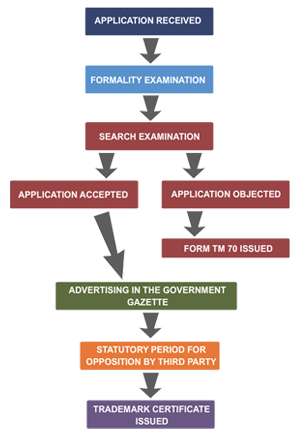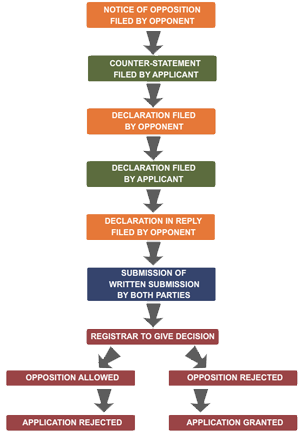

 Pada pokoknya, merek mengidentifikasi suatu bisnis terutama dalam perdagangan. Dengan kata lain, hal tersebut menunjukkan sebagai penanda keaslian.
Pada pokoknya, merek mengidentifikasi suatu bisnis terutama dalam perdagangan. Dengan kata lain, hal tersebut menunjukkan sebagai penanda keaslian.
Anda boleh menyebut sebuah ‘Brand Perusahaan' .
Dengan mengambil tanda yang tepat untuk membedakan barang dan jasa anda disertai dengan pengiklanan yang tepat, sebuah merek dagang dapat menjadi aset yang paling berharga untuk perusahaan anda.
Merek terdaftar memberikan hak eksklusif terhadap pemilik merek untuk menggunakan dan memelihara/ mempertahankan mereknya, dan memastikan bahwa tidak ada keberatan dari kantor merek masing-masing negara atau pihak ketiga yang melawan penggunaan merek tersebut.
Dalam hal apapun rintangan/halangan yang dialami oleh merek anda, orang-orang hukum kami akan siap membantu anda.
Sebuah merek adalah suatu simbol yang digunakan untuk menandakan keaslian barang dan jasa, oleh karena itu, buatlah merek anda dapat dibedakan.
Hal ini termasuk nama, logo dan pengenal lainnya.
Merek yang dapat didaftarkan harus mengandung paling tidak salah satu hal terutama dari hal hal berikut :
Jangka Waktu Perlindungan
Untuk merek, jangka waktu perlindungannya adalah 10 tahun, dan dapat diperpanjang setiap 10 tahun.
Siapa saja yang mengklaim dirinya sebagai pemilik merek boleh mengajukan pendaftaran untuk mereknya yang sudah digunakan maupun yang baru diusulkan untuk digunakan.
Badan hukum, yang memiliki merek, dapat mengajukan permohonan pendaftarannya. Setiap orang yang menandatangani atas nama pemilik harus menyatakan kapasitas dimana dia dapat melakukannya.
Pemohon dapat perorangan atau badan hukum. Badan hukum termasuk semua bagian yang mampu menggugat dan digugat secara hukum.
Perorangan dan yang tergabung dalam badan hukum keduanya dalam arti undang-undang.
Seseorang mengesahkan sebuah dokumen hukum apakah itu disegel atau tidak, oleh tandatangannya (yang mana unik). Suatu badan perusahaan tidak dapat memiliki sebuah tandatangan dan secara normal mengesahkan dokumen dengan segel. Bagaimanapun, pejabat perusahaan boleh menandatangani atas nama perusahaan.
Kemitraan
Kemitraan boleh memiliki merek dan boleh mengajukan untuk pendaftaran merek miulik mereka. Permohonan harus mengandung nama lengkap dari semua mitra dan harus ditandatangani oleh mereka semua atau oleh mitra yang berkualitas yang menyatakan bahwa dia menandatangani berdasarkan peraturan kemitraan 7(1).
Kerjasama/ Usaha Gabungan
Ketika dua atau lebih badan usaha akan gabung dalam sebuah usaha yang khusus dan boleh menggunakan merek semata mata untuk kerjasama. Dalam suatu kasus, beberapa permohonan untuk mendaftarkan mereknya harus ditandatangani oleh, atau atas nama dari, semua anggota gabungan.
Pemerintah dan Badan Dinas
Departemen pemerintah, kota madya, organisasi pemerintah, dan semua pihak pemerintah yang `setara yang boleh mengajukan pendaftaran merek milik mereka.
Perpanjangan MerekJika tidak dilakukan permohonan perpanjangan tepat pada waktunya tidak kurang dari satu bulan dan tidak lebih dari dua bulan sebelum berakhirnya tanggal terakhir pendaftaran merek tersebut, Kantor Merek memberitahu pemilik merek terdaftar mengenai masa berlaku mendatang dari merek tersebut.
Jika perpanjangan tidak dilakukan, Kantor Merek akan membuat merek tersebut dihapus dari pendaftaran. Pemulihan dimungkinkan, sesuai dengan aturan yang ditentukan.
Pendaftaran merek tidak bisa diperpanjang di mana permohonan perpanjangannya dilakukan setelah satu tahun berakhir dari tanggal berakhirnya tanggal terakhir pendaftaran.
The registration of a trade mark shall be for a period of ten years but may be renewed from time to time in accordance with the Act. The duration is calculated from the date of application.
If there is no renewal application filed on a date not less than one month and not more than two months before the expiration of the last registration of a trade mark, the Registrar shall notify the registered proprietor about the impending expiration of said mark.
If no such renewal has been undertaken, the Registrar will cause the mark to be removed from the Register. Restoration is possible, subject to the prescribed conditions. The registration of a trade mark shall not be renewed where the application for renewal is made after one year lapsed from the date of expiration of the last registration.

There are many signs which fall within the definition of a mark, and which are capable of being used as trade marks, but which are specifically prohibited from being registered as trade marks for one reason or another.
The common group comprises those marks, which are likely to confuse or deceive the public.
In addition to these general categories, there are certain specific prohibitions.
For some, refusal is mandatory; for others, refusal is a matter for the Registrar's discretion.
Section 14(b) provides that a mark, or part of a mark, shall not be registered as a trade mark "if it contains or comprises any scandalous or offensive matter or would not otherwise be entitled to protection in any court of law.
The United Kingdom statute is not the same as that employed in the Malaysian Act; it prohibits marks, which are "contrary to law or morality, or any scandalous design".
In seeking to apply these principles to trade mark registration in Malaysia, it should be noted that Malaysia is a multi-racial country and proper regard should be had to the religious susceptibilities of substantial minorities.
In the author's view, care and sensitivity must be undertaken to avoid conflicting marks from the religious, cultural and racial prospective.
Section 14(c) gives the Registrar the responsibility of determining what matter, in a trade mark, is or might be prejudicial to the interest or security of the nation.
It may be that a mark contains an inflammatory statement or words, which could be considered so.
Determining which marks are contrary to law or unprotectable in a court presents more of a problem.
If a mark consists of a device, it may be assumed that the applicant owns the copyright in it.
Section 15(a) provides that any trade mark, which consists of, or contains, any of the following marks must be refused registration:
Anyone who falsely represents that an unregistered mark is in fact registered is guilty of a criminal offence and liable to a fine or period of imprisonment, or both - section 81. Regulation 13 provides a list of additional prohibited marks including; "To counterfeit this is a forgery", "Registered Trade Mark", "Registered service mark" or any words to the like effect of these prohibited words as well as "Bunga Raya" and the representations of the hibiscus.
The examination of every application for registration includes a search for prior rights.
In deciding any question of possible conflict between two applications or between an application and a registered trade mark, there are two main factors before raising an objection under this section.
When comparing cases, trademark examiners will consider each mark as a whole. It is clear that marks are identical if they are the same in every detail when compared side by side.
Any person may, within the prescribed time from the date of the advertisement of an application for the registration of a trademark, give notice to the Registrar and applicant of opposition to the registration.
The notice shall be filed according to the prescribed manner within the above said time frame.
If no opposition were filed during the statutory opposition period, then the Registrar will cause the trademark application to be registered.
Any person may within two months from the date of any advertisement in the Gazette of an application for registration of a trade mark give notice in writing to the Registrar to oppose the registration of any marks.
The usual grounds for an opposition to a trade mark application would include:
